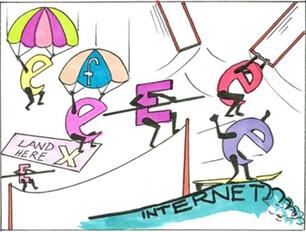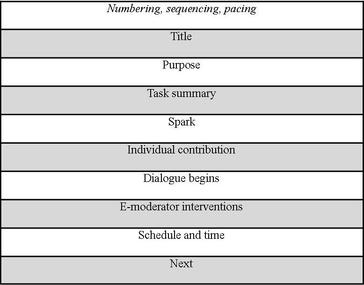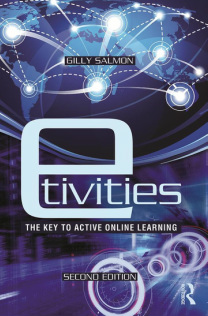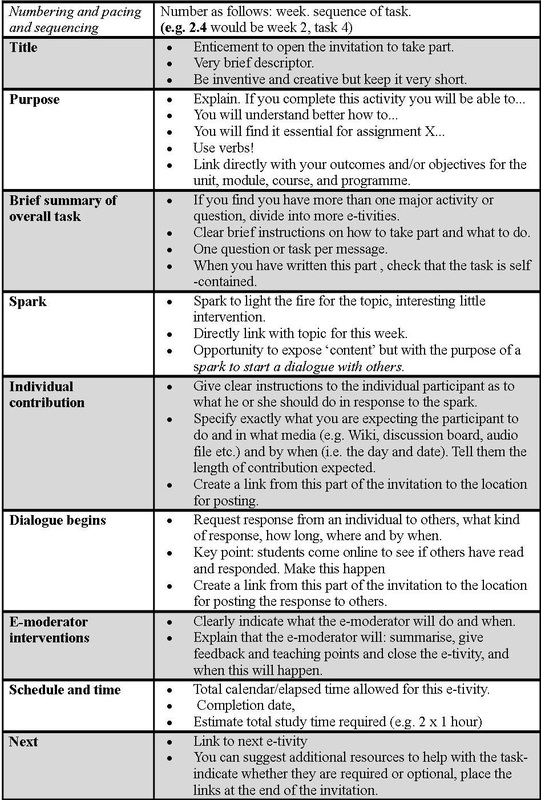E-tivities - Introduction
|
E-tivities are frameworks for enabling active and participative learning. They are researched and applied frameworks which are valuable for blend and hybrid as well as fully digital.
E-tivities are important because they deploy useful, well-rehearsed principles and pedagogies for learning as well as your choice of networked technologies. They focus on the learners who are contributing, providing, reworking, interpreting, combining most of the knowledge. They overturn the idea that learning depends on one big expert and his/her conveying of knowledge. They are based on the strong idea that knowledge is constructed by learners through and with others. |
E-tivities workshops are most popular at the moment. We run them digitally and on location
Heres some feedback
E-tivities workshop feedback
“We applied in a short time what we have read about.
“Shared experience with other people within our educational area”
“ Receiving a template for e-tivity and the tips. Miro has a friendly dashboard”
“ How to engage students and develop e-tivities”
“ Hands on tool”
.”Involvement in creating e-tivities for the 5 stage model”
“ Trying out Stage 3 - Information Exchange - in the group work…very important for students because they can become comfortable with one another online and …more confident in expressing their viewpoints in a group” .
“Having the chance to design my own E-tivity with the help of colleague in a group”
“The workshop was very relaxed... and focused... we understood - and implemented”
Heres some feedback
E-tivities workshop feedback
“We applied in a short time what we have read about.
“Shared experience with other people within our educational area”
“ Receiving a template for e-tivity and the tips. Miro has a friendly dashboard”
“ How to engage students and develop e-tivities”
“ Hands on tool”
.”Involvement in creating e-tivities for the 5 stage model”
“ Trying out Stage 3 - Information Exchange - in the group work…very important for students because they can become comfortable with one another online and …more confident in expressing their viewpoints in a group” .
“Having the chance to design my own E-tivity with the help of colleague in a group”
“The workshop was very relaxed... and focused... we understood - and implemented”
E-tivities are for:
|
E-tivities are:
|
E-tivities are valuable for:
|
The purposes of e-tivities are to:
|
To design e-tivities you need to:
|
Extracts from E_tivities, The Key to Active Online Learning (2nd Edition) pages 6-7
E-tivity Resources
E-tivities. The Key to Active Online Learning Book
E-tivity Videos
|
|
Gilly Salmon discusses E-tivities in 2020
|
Creating E-tivities in Carpe Diem
|
|
Creating Invitations for E-tivites
|
|
|
Social Media for Learning Design
|









